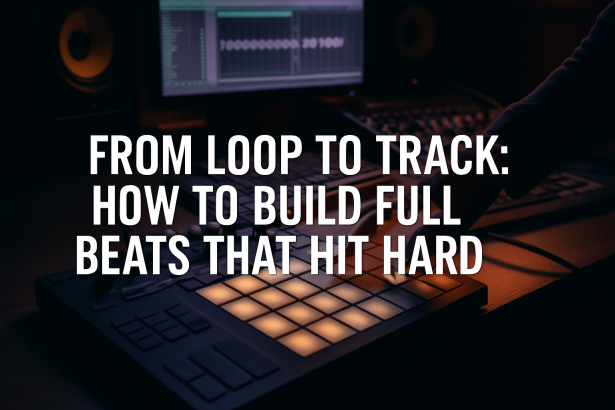From Loop to Track: How to Build Full Beats That Hit Hard
Introduction
You’ve got a loop that slaps. The drums knock, the melody grooves—but now what? Turning a loop into a full track is one of the key transitions every beatmaker must master. In 2025, with thousands of short loops flooding the internet, the beatmakers who stand out are those who can build structure, emotion, and impact. Here’s how to evolve your loops into complete, hard-hitting productions that move listeners from start to finish.
1. Start With a Strong Foundation
Before diving into arrangement, make sure your core loop is solid. It should carry energy and vibe even when stripped down. Focus on a tight drum groove, a memorable melody or sample, and a bassline that glues it together.
Use tools like FL Studio, Ableton Live, or Logic Pro to organize your loop into color-coded patterns for better workflow once you start arranging.
2. Break the Loop Into Sections
Duplicate your loop and start muting, chopping, and filtering elements to build the skeleton of a song. A typical beat structure might look like this:
Intro (4–8 bars)
Verse (8–16 bars)
Pre-Drop or Bridge (4–8 bars)
Drop/Hook (8–16 bars)
Breakdown (optional)
Second Verse / Variation
Final Hook / Outro
Use markers in your DAW to stay organized and see your structure visually. This helps you balance energy and pacing across the track.
3. Create Transitions That Guide the Ear
Hard-hitting tracks don’t just change — they glide. Use transition tools to connect your sections seamlessly:
Risers, sweeps, impacts (check Cymatics FX packs)
Filter automation on drums or melodies
Reverse cymbals or reverb tails to build anticipation
Dropouts or pauses to add tension before the drop
Build emotional contrast. If the hook slaps, make the bridge breathe. Let tension and release drive the flow.
4. Build Drops That Hit Without Overloading
The drop is where everything lands. To make it impactful, don’t just throw in every sound. Instead:
Strip the beat right before
Emphasize bass, drums, and one bold melodic element
Automate volume, reverb, and filters to bring dynamics
Layer subtly — not everything needs to be loud to be felt
A powerful drop often comes from what you take out, not just what you add in.
5. Add Variations and Switch-Ups
Repeating the same loop for 3 minutes kills momentum. Create small changes to keep the ear engaged:
Swap snares or hi-hats in the second verse
Change the melody slightly or re-pitch it
Add a new counter-melody or ambient layer
Try halftime breakdowns or double-time flips
Make every 8 bars feel like a journey. Small changes = big difference in energy.
6. End With Intention
Outros matter. Whether you’re fading out, stripping back to the melody, or ending on a drop — the way a beat ends shapes the listener’s final impression.
Add automation curves, tape-stop effects, or let the reverb tail trail off. Think cinematic, even for a trap beat.
Conclusion
In 2025, building a full beat that hits hard isn’t just about sounds—it’s about structure. Crafting a journey from intro to drop to outro keeps your listeners locked in and your production ahead of the curve. Don’t stop at a fire loop. Shape it, stretch it, break it down and build it back. That’s how hits are made.
![]()














